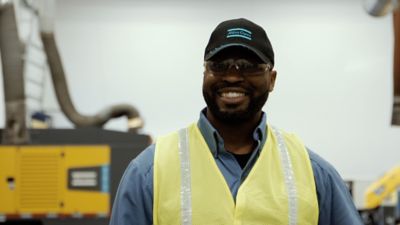Supercritical CO2: using CO2 as a working fluid
Supercritical CO2: using CO2 as a working fluid
CO2 can also be turned into a working fluid for many hydrocarbon-dominant processes. By compressing carbon dioxide beyond its critical point, the gas and the liquid phases become identical. We have experience with compression from the gas side, as well as compression originating from the liquid side and going to supercritical conditions.
CO2 can also be turned into a working fluid for many hydrocarbon-dominant processes. By compressing carbon dioxide beyond its critical point, the gas and the liquid phases become identical. We have experience with compression from the gas side, as well as compression originating from the liquid side and going to supercritical conditions.
Did you know?
Did you know?
CO2 capture capacity at large-scale facilities has tripled from 2010 to 2020, going from 13 million tons captured, to 40 million tons captured. (Source: IEA.org )
CO2 capture capacity at large-scale facilities has tripled from 2010 to 2020, going from 13 million tons captured, to 40 million tons captured. (Source: IEA.org )
Experience in CO2 compression
![Compander engineered for sCO2 processing]()

Experience in CO2 compression
Working with our customers and industry, we help drive progress in this new field – especially when it comes to CO2 utilization. For example, carbondioxide can be used to produce many consumer goods or methanol, for example. In fact, our integrally-geared turbocompressors are needed in most processes where wet CO2 is boosted for further usage.
Atlas Copco Gas and Process has over 15 years of experience compressing CO2. In meeting the challenges of CCUS, we also apply our extensive experience in serving the hydrocarbon processing, power generation and industrial gases industries.
Working with our customers and industry, we help drive progress in this new field – especially when it comes to CO2 utilization. For example, carbondioxide can be used to produce many consumer goods or methanol, for example. In fact, our integrally-geared turbocompressors are needed in most processes where wet CO2 is boosted for further usage.
Atlas Copco Gas and Process has over 15 years of experience compressing CO2. In meeting the challenges of CCUS, we also apply our extensive experience in serving the hydrocarbon processing, power generation and industrial gases industries.
Working with our customers and industry, we help drive progress in this new field – especially when it comes to CO2 utilization. For example, carbondioxide can be used to produce many consumer goods or methanol, for example. In fact, our integrally-geared turbocompressors are needed in most processes where wet CO2 is boosted for further usage.
Atlas Copco Gas and Process has over 15 years of experience compressing CO2. In meeting the challenges of CCUS, we also apply our extensive experience in serving the hydrocarbon processing, power generation and industrial gases industries.




